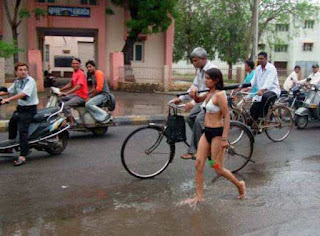Baartman's promoters nicknamed her the "Hottentot Venus
Baartman's promoters nicknamed her the "Hottentot Venus", with "hottentot" - now seen as derogatory - then being used in Dutch to describe the Khoikhoi and San, who together make up the peoples known as the Khoisan.
The British Empire had abolished the slave trade in 1807, but not slavery itself. Even so, campaigners were appalled at Baartman's treatment in London. Her employers were prosecuted for holding Baartman against her will, but not convicted, with Baartman herself testifying in their favour.
"The question remains - was Baartman coerced, as abolitionist/humanitarian campaigners claimed, or was she acting on her own free will?" says Christer Petley, a history lecturer at Southampton University. "If she was coerced, she might have felt too intimidated to tell the truth in court. We'll never know.
"The case is complex and the relationship between Baartman and her handlers was certainly not equally weighted, even if she had some element of choice or felt she could gain something - material or otherwise - from her performance."
Holmes says Baartman's show also included dancing and playing several musical instruments, and that a "sophisticated" audience in London, a city in which ethnic minorities weren't rare even at that time, would not simply have stopped and looked at her for long on account of her race.
After the case, Baartman's show gradually lost its novelty and popularity among audiences in the capital and she went on tour around Britain and Ireland.
In 1814 she moved to Paris with Cesars. She became a celebrity once more, drinking at the Cafe de Paris and attending society parties. Cesars returned to South Africa and Baartman came under the influence of an "animal exhibitor", with the stage name Reaux. She drank and smoked heavily and, according to Holmes, was "probably prostituted" by him.
Baartman agreed to be studied and painted by a group of scientists and artists but refused to appear fully naked before them, arguing that this was beneath her dignity - she had never done this in one of her shows. This period was the beginning of the study of what became known as "racial science", says Holmes.
Baartman died aged 26. The cause was described as "inflammatory and eruptive disease". It's since been suggested this was a result of pneumonia, syphilis or alcoholism.
The naturalist Georges Cuvier, who had danced with Baartman at one of Reaux's parties, made a plaster cast of her body before dissecting it. He preserved her skeleton and pickled her brain and genitals, placing them in jars displayed at Paris's Museum of Man. They remained on public display until 1974, something Holmes describes as "grotesque






Comments
Post a Comment